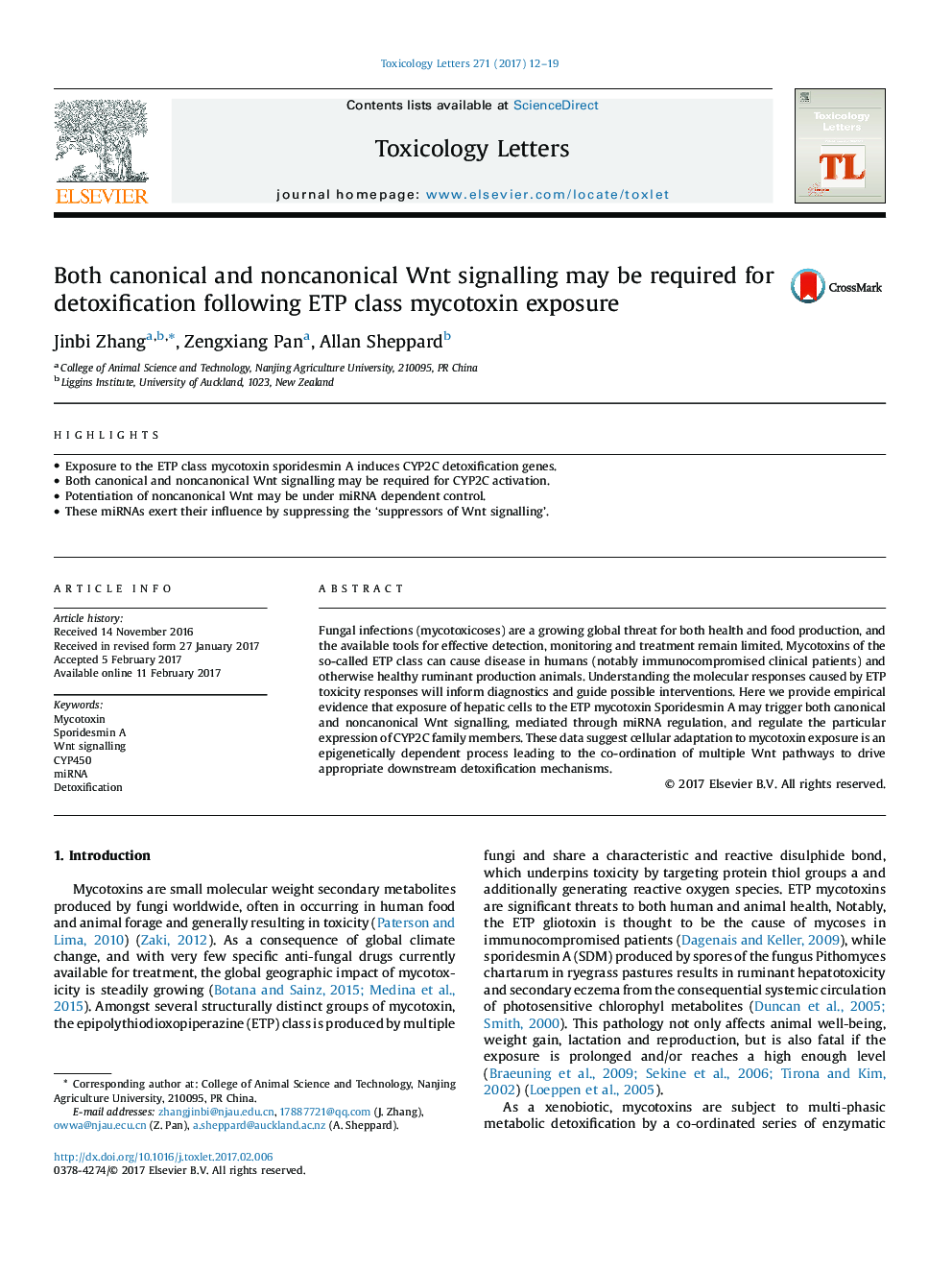| کد مقاله | کد نشریه | سال انتشار | مقاله انگلیسی | نسخه تمام متن |
|---|---|---|---|---|
| 5562116 | 1562602 | 2017 | 8 صفحه PDF | دانلود رایگان |

- Exposure to the ETP class mycotoxin sporidesmin A induces CYP2C detoxification genes.
- Both canonical and noncanonical Wnt signalling may be required for CYP2C activation.
- Potentiation of noncanonical Wnt may be under miRNA dependent control.
- These miRNAs exert their influence by suppressing the 'suppressors of Wnt signalling'.
Fungal infections (mycotoxicoses) are a growing global threat for both health and food production, and the available tools for effective detection, monitoring and treatment remain limited. Mycotoxins of the so-called ETP class can cause disease in humans (notably immunocompromised clinical patients) and otherwise healthy ruminant production animals. Understanding the molecular responses caused by ETP toxicity responses will inform diagnostics and guide possible interventions. Here we provide empirical evidence that exposure of hepatic cells to the ETP mycotoxin Sporidesmin A may trigger both canonical and noncanonical Wnt signalling, mediated through miRNA regulation, and regulate the particular expression of CYP2C family members. These data suggest cellular adaptation to mycotoxin exposure is an epigenetically dependent process leading to the co-ordination of multiple Wnt pathways to drive appropriate downstream detoxification mechanisms.
Journal: Toxicology Letters - Volume 271, 5 April 2017, Pages 12-19